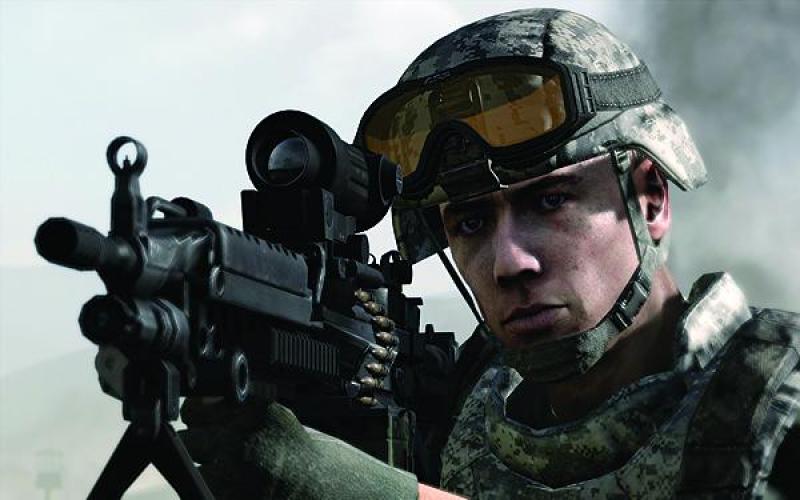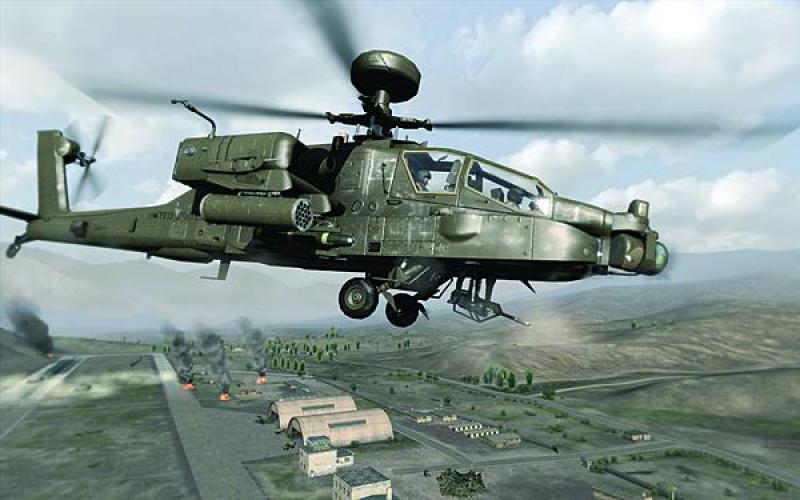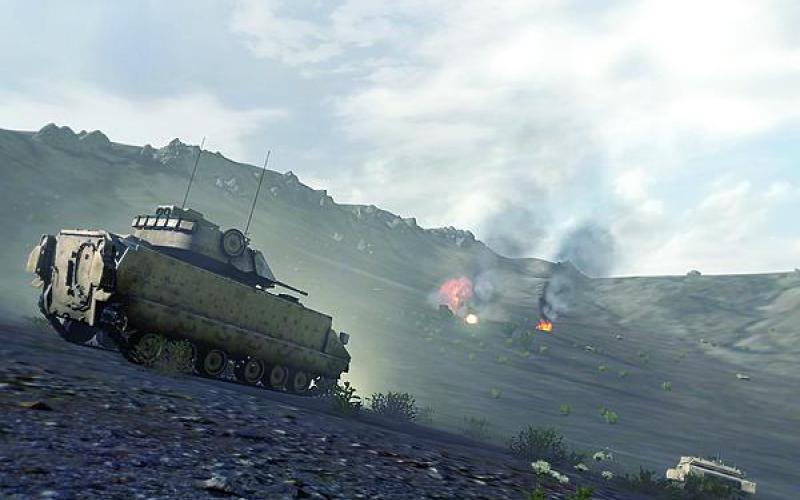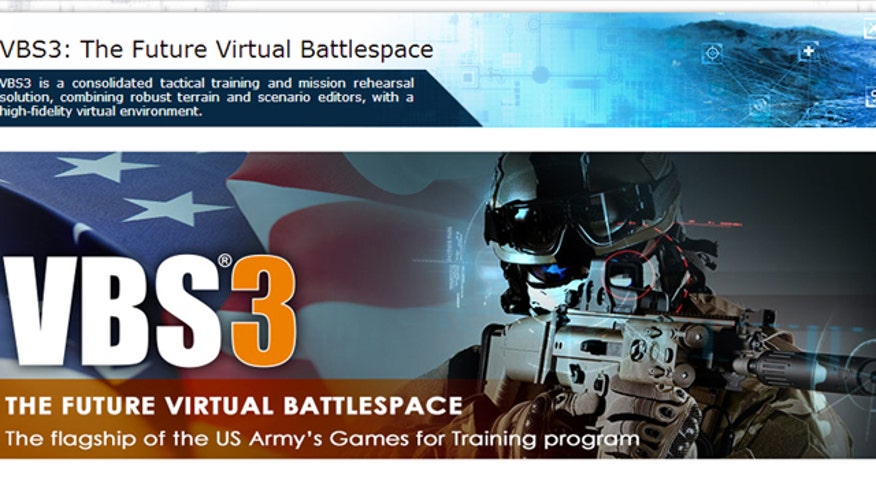It Might Be Virtual, But It Is Not a Game August 1, 2014
By Rita Boland
Enhanced realism in U.S. Army systems increases efficacy. 
Virtual training for U.S. Army soldiers advanced in both capability and fidelity recently with the release of Virtual Battle Space 3. Designed for units at the company level or below, its flexibility makes it applicable to the range of Army missions, reducing costs and logistics needs for users.
Among the new features is human dimension modeling that allows soldiers to create avatars that represent them more accurately both in looks and abilities. Personnel can import certifications such as marksmanship qualifications or special weapons training and personal performance data such as physical training scores. The system also takes into account height, weight and body mass index. The result is that instead of superhuman avatars, the virtual soldiers look more like their real selves and can perform in the game only as they can in the real world.
Marco Conners, chief of Army games for training, Training and Doctrine Command Capability Manager-Virtual and Gaming, says that developers ran hundreds of side-by-side comparisons to ensure algorithms and other factors were correct in establishing the right capabilities. “We have found we’re about the 95 percent solution,” he says. Feedback from soldiers reveals that they find the capability valuable because it allows them to understand their actual combat readiness better. They then can turn more attention to fitness or the range. “We did not know it would have that effect on a personal level,” Conners explains.

It also aids leadership training. Squad leaders can determine the weakest link on a patrol, for example, understanding that if one soldier becomes tired and takes a knee, it affects the whole group. In the game, if an avatar is pushed beyond its physical limits, it will sit or even lie down until it is rested. Leaders also can see what happens in situations such as if a team member picks up a sniper rifle but has no experience with it. The system responds to lack of experience with lack of accuracy. No one is an expert simply because of access to a weapon. This allows leaders to put the right people in the right roles.
In addition to Conners’ organization, other groups played a role in creating the game. They include the Army’s Program Executive Office for Simulation, Training and Instrumentation (PEO STRI) and prime contractor Calytrix with its team members Bohemia Interactive Simulations, SimCentric and Alelo. The validation process includes subject matter experts from each of the Army’s centers of excellence (COEs). “By doing that, we ensure that the behavior in the simulation matches what the COE expects it to be,” Conners says.
Another improvement in the game involves ambience. The training tool creates crowd and insurgent ambiance in a way that more accurately resembles how humans behave in masses, allowing soldiers to develop better the skills necessary in such a situation. Crowd avatars do not walk around randomly or come stare at a user’s face, then wander away. Also included in the upgrades is a digital chalkboard/digital mission rehearsal tool. Conners likens this to a digital sand table. It has generic terrain and geospecific terrain options, the latter built for units’ areas of operation or training ranges.
Three other major enhancements also are included. The scenario tool allows planners to prepare for large live, virtual and constructive exercises. They can import battle system files that provide continuity across all three environments. The last two upgrades are call for fires and fires advanced field artillery tactical data system, both of which improve firing capabilities. When Virtual Battle Space (VBS) 2 was under development in 2008, Conners said project personnel had 33 requirements. For VBS 3, they had 148 requirements. “We looked for something that was much more robust,” he explains. Offering upgrades often and taking advantage of the commercial sector allow the virtual training to keep pace with a multibillion-dollar industry that advances rapidly.

VBS 3 requires a suite of 53 computers, and distribution of the system occurs in several ways. In some cases, the Army fields all the hardware and software to locations. But if a location has the hardware and needs the program, the staff can download it online or request it to be sent on seven discs. The download takes a long time and requires large pipes, so many organizations prefer the other mode, which also serves as a backup in case a problem occurs.
Use of VBS 3 is not limited to the Army. The U.S. Marine Corps and foreign militaries also employ it, enabling the development of more capabilities and interactions. Military users can add their own capabilities and then share them. Common Access Card holders can log on to the MilGaming website to share what they have created and take advantage of what others have made available. Experts at PEO STRI say the site has more than 40,000 registered users. The site additionally includes forums so visitors can share ideas and ask questions; visitors also can access other training simulations.
VBS 3 team members give units ideas to consider and make sure they have controls and training objectives. Without those, “it’s nothing but a game,” Conners says. Usage should not be chaotic. “We’re not playing,” he states. “We’re training.” The robust nature of the simulations means that they are applicable to almost all situations. “You’re limited by your imagination” is a mantra repeated by Conners, PEO STRI personnel and users. Conners adds, “Whatever scenario you can dream up, you can probably execute in VBS 3.” Though company and below units are the primary users, units at battalion and above employ it for mission planning and rehearsal, to train fires at the battalion level and as a visualization tool for understanding the terrain and environment in an area of operations.
The system’s reach expands to situations outside of the traditional battlefield as well. The 705th Military Police Battalion, which has responsibilities at the Midwest Joint Regional Correctional Facility, Fort Leavenworth, Kansas, used the system for its training purposes. When looking over their budget for fiscal year 2014, battalion leaders had to deal with significant training cuts, forcing them to find alternatives for education. Lt. Col. Rolanda Colbert, USA, the battalion commander, says that VBS offered a viable option. It also gave the VBS 3 program a novel opportunity because it was accustomed to working with combat units. “This was a win-win for both of us,” Col. Colbert says. In December 2013, the unit ran an exercise with VBS 2. Then in April 2014, it took advantage of the rollout of VBS 3, which had not been available yet for the previous event. Capt. Christopher Anderson, USA, battalion S-6 and S-2, says his organization found VBS 3 more beneficial.
The virtual environment offered through the simulation allowed the military police to be more creative in the scenarios it ran. It also enabled the unit members to conduct their training without disturbing the routines of the inmates. Performing a full-blown training exercise in the prison facility would impact inmate movements and other factors.
Col. Colbert says she definitely saw the advantage of the virtual environment in this regard. Furthermore, the observation tools were of utmost importance, she adds. They allow leaders to see exactly what troops are doing and review decisions with them. Observers can pause and go back in time to show trainees what they might have missed in the moment. Though they have an eagle-eye view of all activity, they also can zoom in to focus on an individual. The capabilities provide leadership the chance to look through policies and procedures.
Through the training, the unit was able to validate its standard operating procedures. By freezing in time, leadership could determine and show team members where operations started to go wrong and follow the chain of events from a decision.
Another benefit specific to VBS 3 is the exact terrain modeling. The colonel says moving from real to virtual was almost seamless because of the level of reality of the simulation. “I know what’s around this corner because I see it every day,” she says by way of example. Her battalion did not include pulling in the physical details for each soldier, but may do so in the future, as physical training plays an important role in corrections. “I definitely think [VBS] 3 is light-years beyond 2,” Col. Colbert says.
A challenge to using the system was familiarizing soldiers with the computer controls. However, Col. Colbert expects improvement with more usage. Personnel at PEO STRI explain that soldiers are given laminated cards with the keyboard and mouse controls before sitting down at the computers. In the 705th’s case, a situation arose in which they were unable to complete their full tutorial. Both the colonel and captain believe the system can be picked up quickly. Some soldiers went through VBS 2 and 3, and they were able to transfer a portion of the skills from one system to the other. Col. Colbert says if they had time to do the full tutorial, execution would have been easier, but even without that, many of the troops are computer savvy and knew what buttons to push.
The younger soldiers, in particular, enjoy having an avatar run around. “It’s pretty neat to watch,” the commander says. Having soldiers motivated to train benefits the unit, which intends to use the system more in the future.
Original article:
http://www.afcea.org/content/?q=it-might-be-virtual-it-not-game#sthash.vRJ6BN3Q.dpuf











 Similar topics (5)
Similar topics (5)